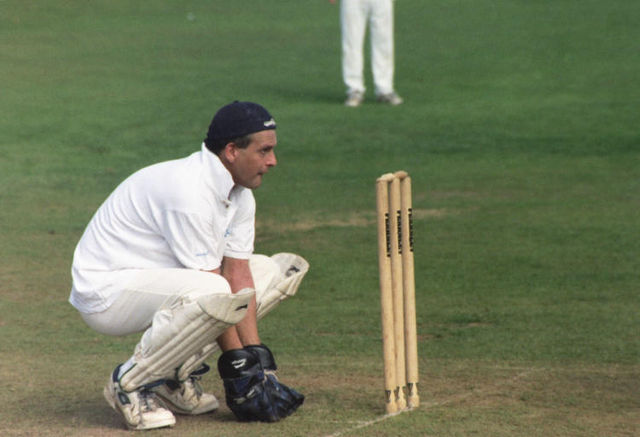Robert William Taylor MBE is an English former cricketer who played as wicket-keeper for Derbyshire between 1961 and 1984 and for England between 1971 and 1984. He made 57 Test, and 639 first-class cricket appearances in total, taking 1,473 catches. The 2,069 victims across his entire career is the most of any wicket-keeper in first-class history. He is considered one of the world's most accomplished wicket-keepers. He made his first-class debut for Minor Counties against South Africa in 1960, having made his Staffordshire debut in 1958. He became Derbyshire's first choice wicket-keeper when George Dawkes sustained a career-ending injury. His final First Class appearance was at the Scarborough Festival in 1988. He remained first choice until his retirement except for a short period in 1964 when Laurie Johnson was tried as a batsman-wicketkeeper. He was a part of the English squad which finished as runners-up at the 1979 Cricket World Cup.
Taylor batting vs NZ, February 1978
The Adelaide Oval, scene of Taylor's career-best 97.
The wicket-keeper in the sport of cricket is the player on the fielding side who stands behind the wicket or stumps being watchful of the batsman and ready to take a catch, stump the batsman out and run out a batsman when occasion arises. The wicket-keeper is the only member of the fielding side permitted to wear gloves and external leg guards. The role of the keeper is governed by Law 27 and of the Laws of Cricket.
Wicket-keeper in characteristic full squatting position, facing a delivery from a slow pace or spin bowler
Wicket-keeper in characteristic partial squatting position (together with slip fielders), facing a delivery from a fast bowler.
Adam Gilchrist of Australia standing up to the stumps against England during the fourth test of the 2005 Ashes series in England.
Wicket keeping gloves along with the inner gloves






